AS Kemal Ataturk 3
This picture shows the bust and the words of condolence said by Atatürk regarding those lost during the invasion of the Gallipoli Peninsula in 1915:
Those heroes that shed their blood and lost their lives... you are now lying in the soil of a friendly country. Therefore rest in peace. There is no difference between the Johnnies and the Mehmets to us where they lie side by side here in this country of ours... You the mothers who sent their sons from far away countries wipe away your tears. Your sons are now living in our bosom and are in peace. Having lost their lives on this land they have become our sons as well.
I took this picture on Thursday 28 April 2005, just days after ANZAC Day, when the floral tributes were laid.
Peter Ellis 04:19, 1 May 2005 (UTC)Relevante Bilder



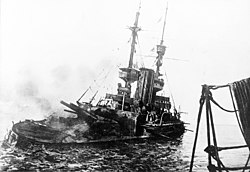





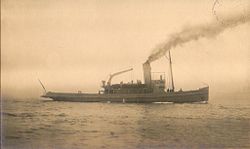







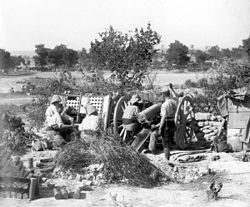
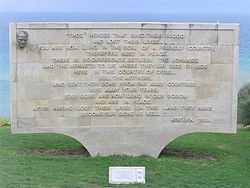



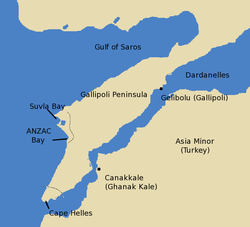



Relevante Artikel
Schlacht von GallipoliDie Schlacht von Gallipoli wurde während des Ersten Weltkriegs vor und auf der türkischen Halbinsel Gallipoli auf der europäischen Seite der Dardanellen, aber auch auf der asiatischen Seite der Meerenge, zwischen Ägäis und Marmarameer ausgetragen. Die Entente-Mächte wollten später in einer gemeinsamen Operation die Halbinsel besetzen und sie als Ausgangsbasis für die Eroberung der osmanischen Hauptstadt Istanbul nutzen, scheiterten jedoch an den Verteidigern. Die Schlacht forderte auf beiden Seiten insgesamt 100.000 Tote und 250.000 Verwundete, was fast der Hälfte der zum Einsatz gekommenen Soldaten entsprach. In der Türkei nennt man die Operation nach der an der Meerenge gelegenen Stadt Çanakkale Çanakkale Savaşı. Im englischen Sprachraum ist sie als Dardanelles Campaign oder Gallipoli Campaign bekannt. Der 25. April als Jahrestag der Landung auf Gallipoli wird noch heute in Australien, Neuseeland und Tonga als nationaler Gedenktag begangen. .. weiterlesen
